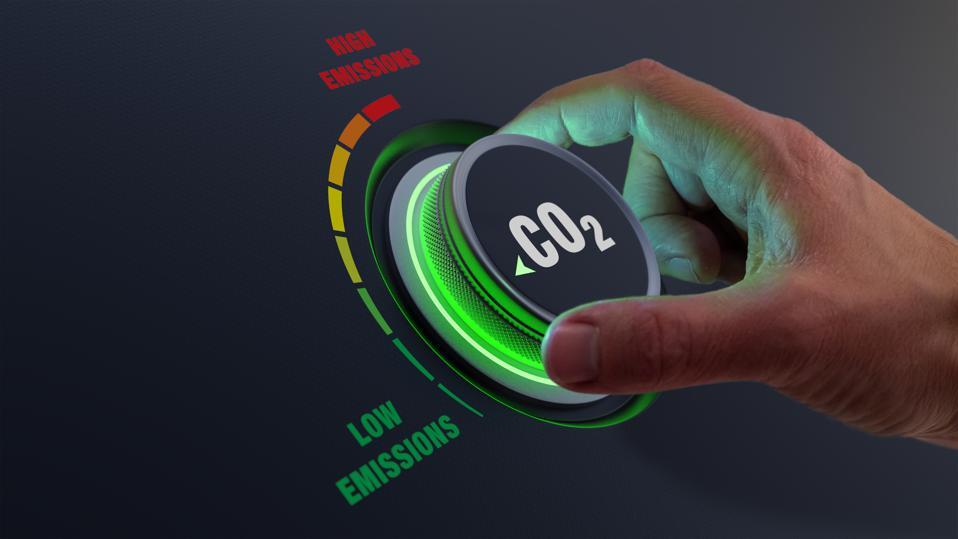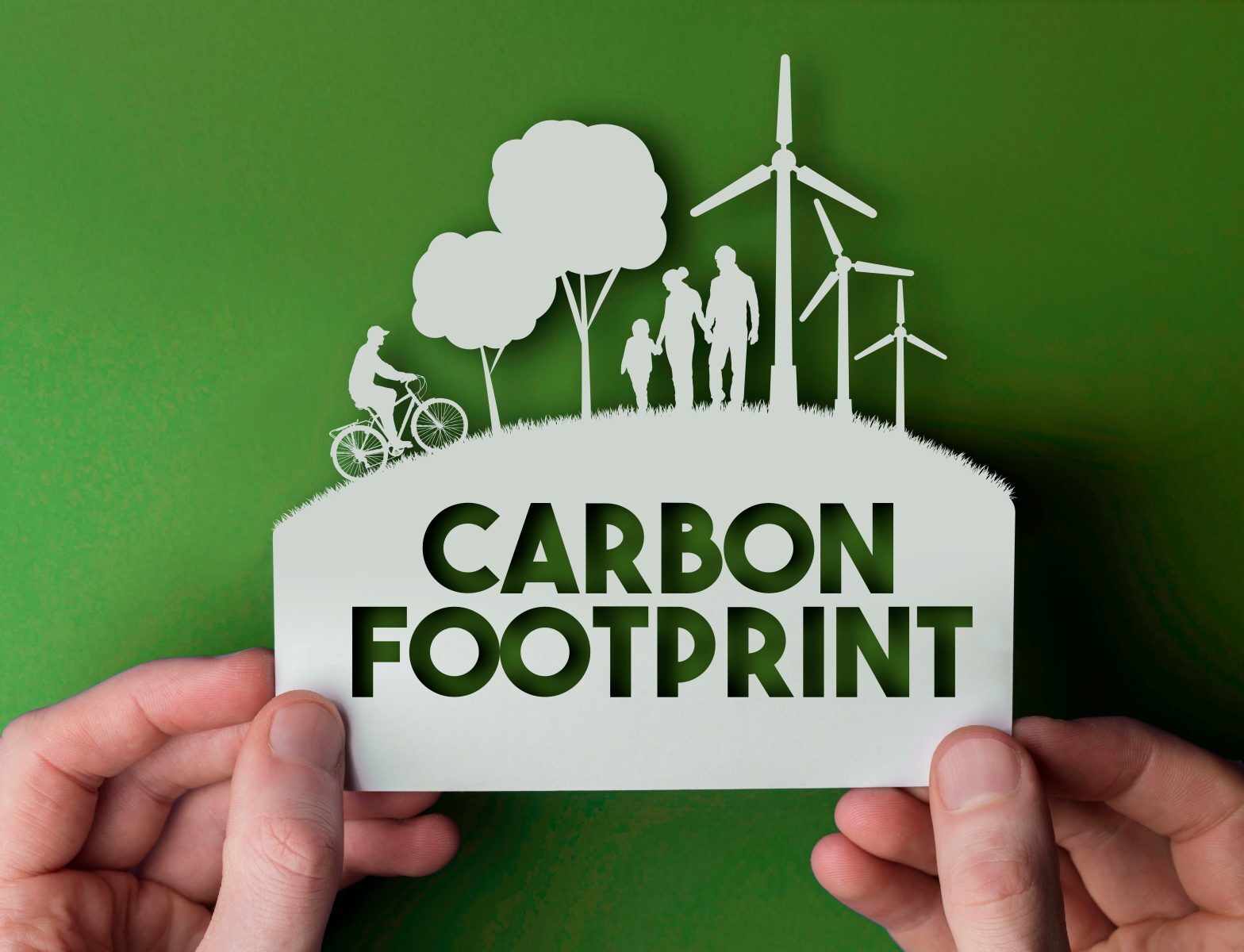
How Will We Fight Against The Global Climate Crisis?
The carbon footprint corresponds to the entire amount of greenhouse gases (GHG) produced to directly or indirectly support a person's lifestyle and activities. Carbon footprints are usually measured in tonnes of CO2 equivalent per year and can be attributed to an individual, an organization, a product or an event, among others.
The greenhouse gases that make up the total carbon footprint can come from the production and consumption of fossil fuels, food, manufactured goods, materials, roads or transportation. And despite its importance, exact calculation of carbon footprints is difficult due to insufficient knowledge and brief data on the complex interactions between contributing processes, including the impact of natural processes that store or release carbon footprints.
Official Definition of Carbon Footprint by the World Health Organization
According to the World Health Organization, a carbon footprint is a measure of the impact of your activities on the amount of carbon dioxide (CO2) produced through the burning of fossil fuels, and is expressed as the weight in tonnes of CO2 emissions produced.
What is a Carbon Footprint?
Let's start by looking at the definition of a carbon footprint, carbon emission expressions. This is a phrase often used when talking about the environment and climate change, but not always understood. Carbon emission, which is among the terms and phrases used about climate change, is actually a misuse.
- Carbon footprint
A measure of the total amount of greenhouse gases released into the atmosphere as a result of the actions of an individual, organization or nation. It is usually measured in tonnes of CO2e (carbon dioxide equivalent).
- Greenhouse Gases (GHG)
Any kind of gas in the atmosphere that prevents the heat from escaping. Regarding your carbon footprint and climate change, the main things to mention are carbon dioxide, nitrous oxide and methane.
- Greenhouse Effect
The process by which greenhouse gases in the Earth's atmosphere trap heat from the sun. While this is a natural phenomenon that makes the planet habitable, our greenhouse gas emissions are causing the Earth to warm at an unnatural rate.
- Climate Change
A long-term pattern of change in temperature and weather patterns, either globally or regionally. While these changes occur naturally, human-induced climate change is accelerating rapidly.
- Global Warming
The rapid increase in the average surface temperature of the Earth as a result of the accumulation of greenhouse gases in the atmosphere. It's just one element of climate change.
- Fossil Fuels
Natural resources that produce carbon dioxide and other greenhouse gases when burned. Coal, oil and natural gas are examples.
As we will see, these terms are all closely linked to the term carbon footprint. Moreover, individuals, organizations and nations can do their part to take responsibility for many of these factors.
How is the Carbon Footprint Calculated?
In order to minimize environmental damage, the amount of carbon emissions must be kept below a certain level. The primary way to meet this condition is to calculate the carbon footprint.
Although there are different methodologies when calculating the carbon footprint, the basic logic is to multiply your fuel consumption with the emission factor. However, this calculation is a little more detailed in practice.
Although the first thing that comes to mind when it comes to fuel consumption is the fuel of the vehicles, there are many factors that affect fuel consumption such as the shopping you make in your daily life, your consumption of food and clothing, the frequency and method of your travels.
- Physical ratios
In the case of a physical emission factor, the amount of CO2 released per unit consumed can be specified. This applies to transportation or agricultural production, among others. For example, consuming a full tank of gasoline (50 liters) is equivalent to 114 kg of CO2 emissions.
- Monetary ratios
The monetary emission factor provides an estimate of the CO2 content produced by a product or service from its price. It is expressed as kg CO2e / K € excluding. It applies to activities and products that cannot be calculated using tax and physical factors. This applies, for example, to a computer or electronic product.
- Online tools
These calculation methods are still complex, especially when it comes to monetary factors. Various organizations have developed online tools to help us evaluate our greenhouse gas emissions.
The calculations for more comprehensive and industrial facilities are usually carried out by companies focused on this field. For this purpose, firstly emission sources and the effect area of the facility are determined. In the next step, how much emission is made from these sources to the impact area is measured. At the end of the process, a report is prepared and suggestions are shared on how the facility can reduce its carbon footprint. This report also serves as a reference for the following years.
How Can You Personally Reduce Your Carbon Footprint?
Achieving a lower carbon footprint may require significant lifestyle changes. Even adopting a few of these carbon-reducing tips can get you involved in a more sustainable living.
- Make Your Home More Energy Efficient.
Make sure your home is properly insulated and doors and windows are weather-stripped to prevent cooled and heated air from escaping. be sure. Finally, reduce energy use in your daily life: buy appliances that meet energy efficiency standards, use your thermostat to regulate temperatures and use your air conditioner infrequently, turn off all lights and appliances when not in use, and replace old lamps with less energy-consuming LED bulbs.
- Reduce Use of Plastic.
Plastic is almost impossible to break down. Additionally, most plastics cannot be effectively recycled (even those with the recycling symbol on them), meaning that most plastic waste ends up in landfills or the ocean. To help combat this, you can easily reduce your use of single-use plastics like shopping bags or water bottles by keeping reusable items on hand.
- Recycle More
Make a commitment to recycle your waste and use your local recycling facilities. If your municipality does not offer a recycling collection service, find out where the nearest facility or collection point is. Try to separate your plastic, paper, metal and glass waste in your home. Find ways to reuse or recycle non-recyclable waste items. Also, ask yourself if you really need to buy these non-recyclable items again in the future.
- Minimize Food Waste
There are several ways to reduce food waste. Food waste placed in a bin usually ends up in a landfill and then decomposes, producing large volumes of methane in the process. Methane is a greenhouse gas. Put organic food scraps in a compost bucket and use it to feed your garden. Try to finish your meals at restaurants and takeaways. Store food properly by placing it in a cool, dry cupboard or refrigerator. Buy only what you need; Having a weekly meal prep will help you shop for only the foods you need.
- Use Eco-Friendly Products
Every time you go to the store, buy long-lasting products to avoid premature replacement, use reusable shopping bags, turn down extra packaging. Start using environmentally friendly cleaning products. Opt for low phosphate products as they are better for water systems, rivers and the ocean. Phosphates stimulate the growth of algae and reduce oxygen levels in the water that are harmful to fish and other aquatic organisms.
How A Company Can Reduce Its Carbon Footprint
There are several ways a company can reduce its supply chain's carbon footprint, ranging from how you manage shipping and handling to what materials you use in packaging. Some factors to consider include:
- Measure Your Company's Carbon Footprint
The first step is to measure your company's carbon footprint. This data provides a baseline on current activities and how big your carbon footprint is right now. This information can then be used to find ways to reduce greenhouse gas emissions, making your business more sustainable over time.
- Generate Energy from Renewable Sources
The falling prices of renewable technologies are making local green energy generation possible for more people than ever before. Solar, energy storage and battery management systems can significantly reduce the payback time of your investment in renewable energy. These solutions also form the basis of environmentally friendly production. You will have a positive effect on reducing not only emissions but also your electricity bills and costs.
- Proper Space Usage
When shipping your product to distribution centers, you should consider two factors: how much space is available in your packaging and the use of cubes.
Research by Forbes reveals that 24% of ocean-going shipping containers from Asia are empty. This means that around 61 million TEU containers are shipped unnecessarily each year, costing tens of billions of dollars and releasing about 122 million tons of carbon dioxide into the atmosphere. Be sure to check your packaging's cube usage to reduce the amount of air you carry. When considering cube use, ask yourself: "Is the packaging really suitable for the product we're shipping?"
- Evaluate Materials
While corrugated packaging is more sustainable than plastic, not all corrugated packaging is the same. While it may seem like an easy way to cut costs, using below-average corrugated cardboard can lead to damage to packages in transit and more problems throughout your supply chain. This then requires repackaging, requires more materials, and creates a larger carbon footprint than if you used the appropriate materials from the start. You should be familiar with the materials available and how they perform in environments throughout your supply chain. Material expertise can provide insights into reducing material usage and other cost-saving packaging efficiencies.
- Reduce, Reuse and Recycle
Using the three R's (reduce, reuse, & recycle) is another way your business can be more environmentally friendly. Thinking creatively about how to apply the three Rs to each part of your business is essential. They can be applied to all areas of your business, including office supplies, processes, packaging and more.
For example, do your employees drink soda from aluminum cans? Then why not consider making an aluminum can recycling bin? You can hire a local aluminum recycling company to come and empty the container on a regular basis. That way, aluminum cans don't end up in the landfill. Instead, your company's carbon footprint is reduced by recycling cans.
What about shredding old documents? Instead of throwing the documents in the trash, why not shred them and take them to a paper recycling company?
Why not consider buying used office furniture instead of buying new office furniture? By using used furniture instead of new furniture, your company not only saves money, but you also help reduce your company's carbon emissions.
These are just a few of the ways your company can implement the three Rs. Again, using this method may require some creative thinking. However, the three Rs can significantly reduce your carbon emissions.
- Choose Sustainable Suppliers
Another way to reduce your company's carbon footprint is to use only sustainable suppliers. Consider that your current suppliers may not be using environmentally friendly methods. Even if you as a customer are not involved in their operations, purchasing their services or products helps you increase your own carbon footprint. So switching to greener suppliers can reduce your own company's carbon emissions.
Search for suppliers with ISO 14001 certification. This certification is proof that the company uses green methods for its Quality Management Systems and that the supplier is actively working to reduce waste reduction and improve resource efficiency.
- Use Online Meetings and Events
Many companies today use a hybrid working model, where some employees work in the office and some work remotely. In addition, the hybrid working model has caused many businesses to switch to online meetings and events.
Online meetings and events are more environmentally friendly. For one thing, no one has to travel long distances for a meeting/event. Consider that travel is responsible for about 1/5 of total global emissions. By switching to online events and meetings, your company can reduce its carbon footprint and save on travel costs at the same time.
- Invest in Green Office Equipment
Another way to reduce your company's carbon footprint is to invest in green office equipment. Here are some ideas to consider when choosing greener office equipment:
Switch to LED lighting and turn the lights off at the end of the day. Try to rely more on natural light during the day.
Use only kitchen appliances with a high energy class. Enable energy-saving/battery-saving modes on all PC and mobile devices. Download office thermostat; Lowering 1°C can reduce the energy consumed for heating by about 13%.
These changes may seem minor; but you might be surprised how much energy you save when combined across the entire company. Not only that, but your business can save on energy costs as well.
- Choose Sustainable Web Hosting
Even your website may be using too much energy. But it's also possible to reduce your site's carbon emissions. First, check if your current servers are hosted externally. If so, your site may be using too much energy to keep the servers running.
If you want to reduce your website's carbon footprint, look for these eco-friendly options:
Hosting companies that use renewable energy sources. Carbon balancing, Energy-efficient technology, Energy-saving equipment.
Our Commitment to Reducing Our Carbon Footprint as YAŞALAR
Businesses have a great opportunity to build a more sustainable future based on our shared concerns about our shared heritage, our shared world.
Everything in our life depends on nature and its parameters. Every solution we develop by learning and being inspired by nature exists to contribute to the adoption of a life style in harmony with nature and to produce effects, benefits, technology and experience "according to nature".
As Yaşalar, we are aware of our responsibility towards the environment and the climate problem. We monitor carbon emissions with the high-tech equipment we use during production and use recyclable materials.
We produce our own energy with the solar energy systems on the roof of our factory. Thanks to our SPP investment, we can produce 60 percent of our energy needs ourselves. In addition, we prevent the emission of 420 thousand tons of carbon dioxide per year. In addition to its contribution to our company's economy, it is a pleasure to be a partner in the effort made to leave a more livable world to future generations with our SES investment.
The innovations that power our environmental journey are not only good for our world, they also enable us to make our production more efficient. The climate movement could lay the foundation for a new era of sustainable economic growth. With our commitment to reduce our carbon footprint, we hope to be at the forefront of a movement that will create even greater change.
We Care About Nature and Grow With It!
Paris Agreement
First signed in November 2016, the Paris Agreement is the global standard on which UN member states work to reduce advances in global warming.
The agreement focuses on two main goals: mitigation and adaptation. Mitigation is the slowing of contributions to climate change. Adaptation is when the contribution has already taken place and society is adapting to climate change after the event.
Clean Air is the Right
We invite everyone who wants to contribute to the steps that will stop the climate crisis in order to build a more livable world, and to raise even the smallest hope with great faith in the fight against the climate crisis, to improve our common future.
It's time to act. you too!



 tr
tr
 de
de






